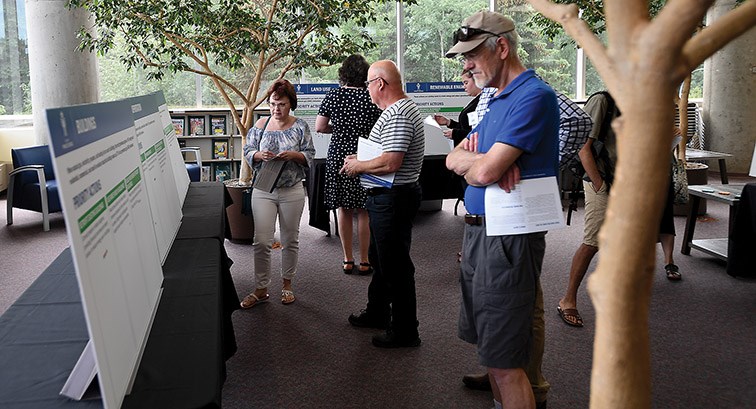City hall has launched a public engagement campaign to determine a strategy for reducing greenhouse gas emissions.
It began Wednesday with an open house at the Bob Harkins branch of the Prince George Public Library and will continue until Wed., July 31. Comments can be submitted at www.princegeorge.ca/environment.
Staff will also be on hand at the Prince George Farmers' Market on Sat., June 22, 8:30 a.m. to 2 p.m. and at the Lheidli T'enneh Memorial Park Pavilion on Thurs., July 11, noon to 8 p.m.
Residents are being asked to assign priorities to 13 actions city staff has identified to carry out the work and will be used to update the city's last energy and greenhouse gas management plan, produced in 2007, and pursue new targets aligned with provincial and federal commitments.
In turn, the actions are divided into five groups: buildings, transportation, waste and food, land use and renewable energy.
Here's a closer look:
Buildings
- Build new, energy-efficient buildings: Require energy-efficient buildings and help builders transition to the new BC Energy Step Code.
- Use more wood in buildings: Wood stores carbon and is less energy-intensive compared to other products like steel. Using wood in buildings also supports local industry and expertise.
- Retrofit existing buildings: Connect people to rebate programs and provide financial incentives and legal advice to reduce energy use in existing buildings.
Transportation:
- Support active travel: Improve infrastructure to reduce vehicle use and make it easier for people to walk and bike around the city.
- Improve transit: Add new routes, improve schedules, and make other improvements to increase transit use.
- Encourage electric vehicles: Provide more public charging stations, encourage home and work charging options, and consider initiatives that encourage electric vehicle ownership.
Waste and food
- Divert yard, garden, and kitchen waste from landfills: Provide information and services to help residents reduce waste. Examples include education, organic composting options, curbside collection, and new renewable gas options.
- Support local food production: Encourage local food production and continue to support local farmers markets.
Land use
- Encourage connected and compact urban living: Restrict development in the city's outlying areas. Encourage new housing and building developments in established neighbourhoods (infill development). Encourage compact community growth around hubs like transit, shops, parks, and other amenities.
- Make streets about people, not just vehicles: Focus on designing streets for walkers, cyclists, and transit users.
- Plant and grow more trees: Protect and grow the city's urban forest and preserve existing tree canopies.
Renewable energy
- Produce renewable natural gas using organics: Explore ways to use organic materials (e.g. yard, garden, and kitchen waste) to produce renewable natural gas. This will also help offset local natural gas consumption.
- Increase connections to the downtown renewable energy system: The DES has significant capacity to heat other buildings in the downtown area. Connecting more buildings to the DES can reduce greenhouse gas emissions.


